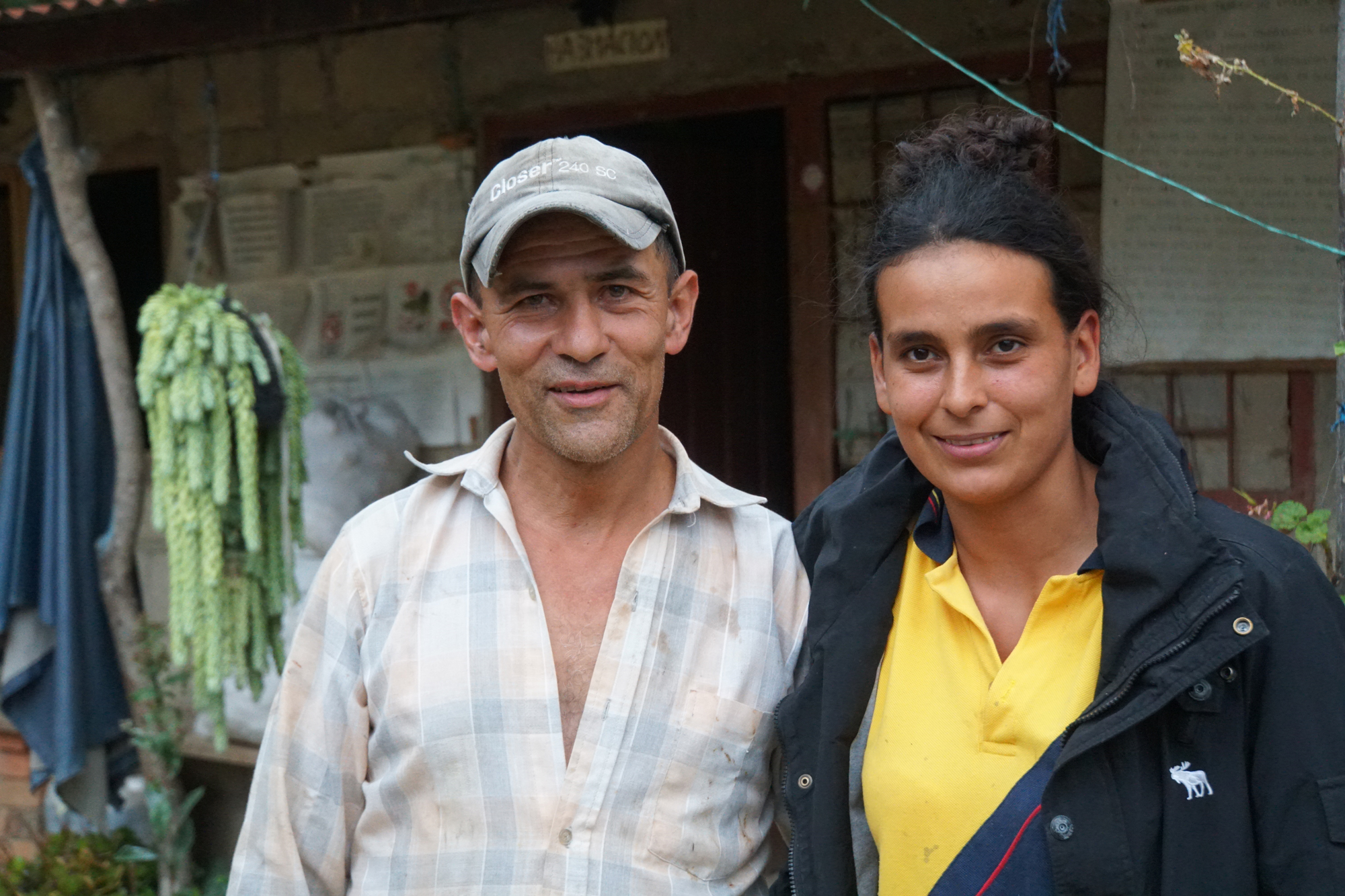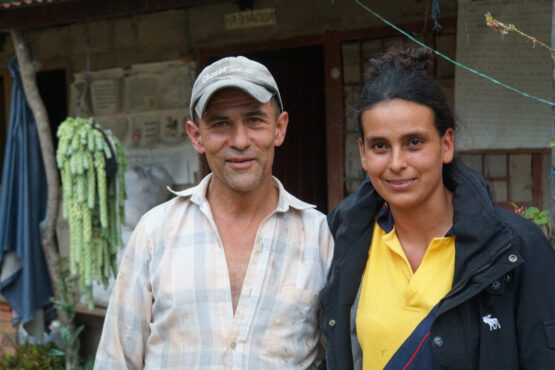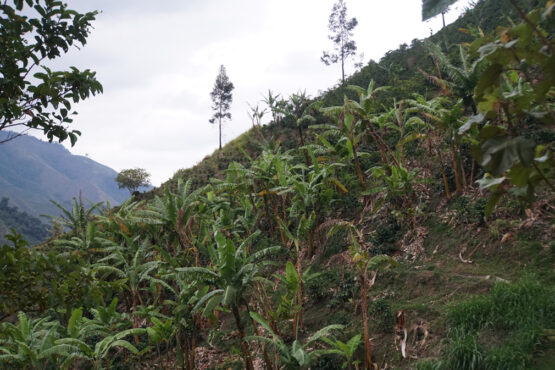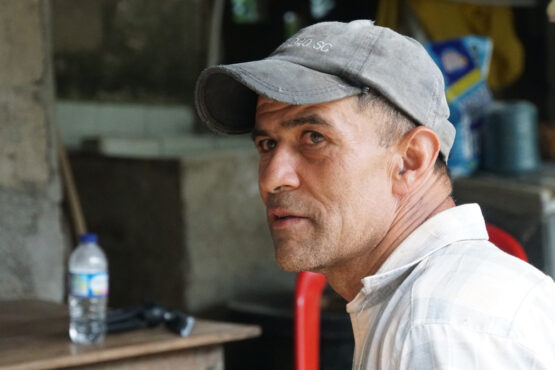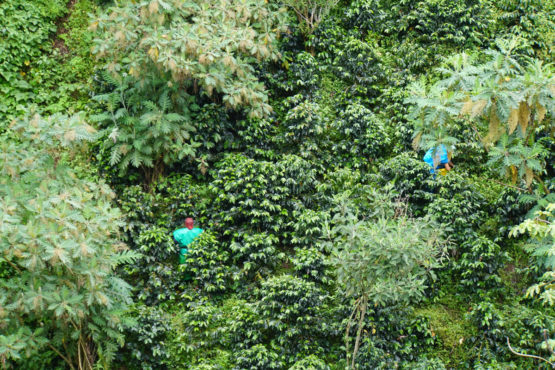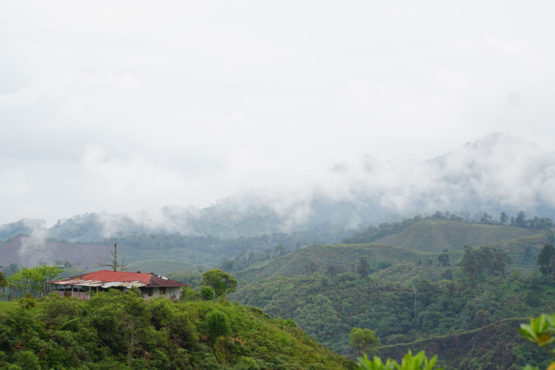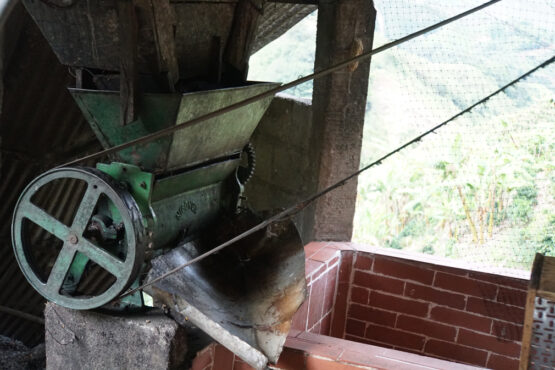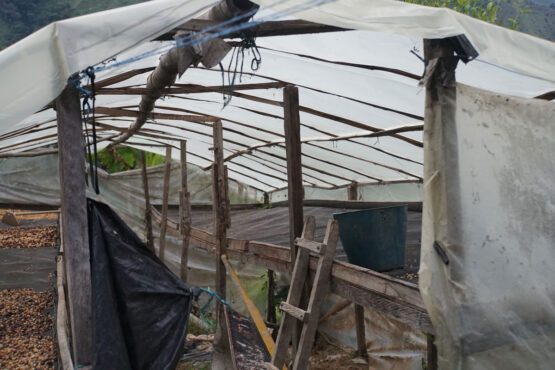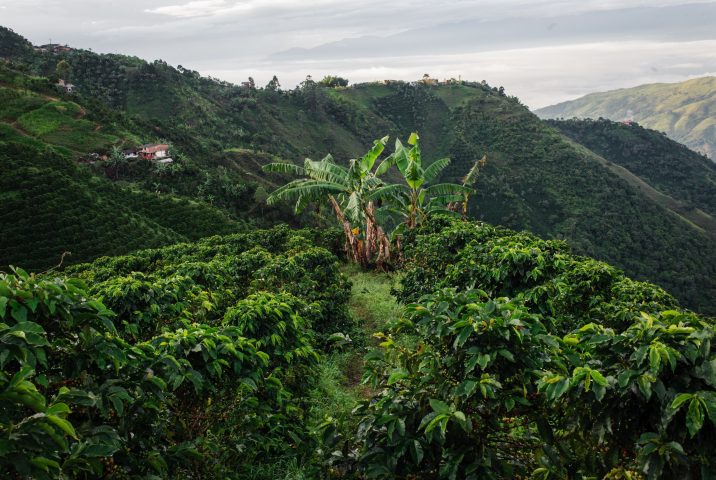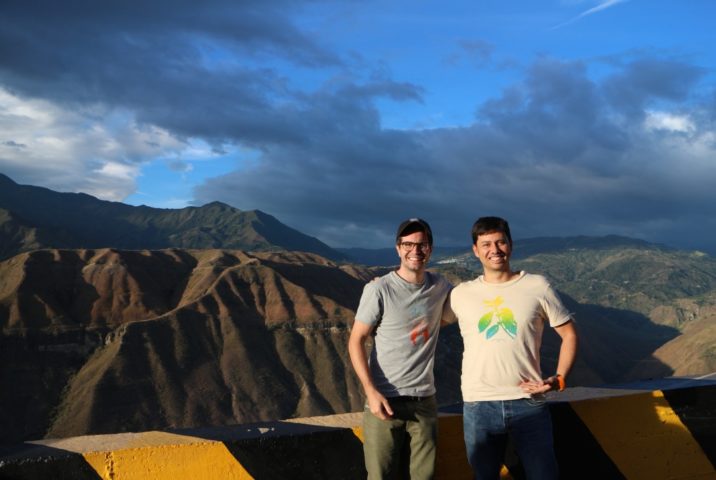Las Piñas
Bright and complex, with tropical acidity and rich sweetness. Lychee, green apple and finger lime.
This 100% Caturra microlot was produced by Reinaldo Parra and his family on their five hectare farm, Las Piñas (meaning “the pineapples” in Spanish), located near the small community of China Alta, in the municipality of Ibagué, in Colombia’s Tolima state.
Finca Las Piñas sits at a staggering height of 1,900 meters above sea level, in the steep, rugged hills that surround Tolima’s capital city, Ibagué. The town of China Alta is named for the Rio La China, a small and beautiful river that curves through the mountains and eventually feeds into Rio Magdelena, Colombia’s principal river. Alta refers to the higher elevations of the area, where the sweetest and most refined coffees are grown and harvested. The farm sits on the steep valley walls of Rio La China, which is used as a water source to irrigate and process the coffee.
Reinaldo is an influential coffee producer in the China Alta region, with many of his neighbours looking to him for advice and guidance. His farmland includes two very steep slopes, with his home, micro-beneficio (mill) and drying beds sitting between them. Reinaldo has chosen to plant the Caturra variety, which yields well at the high elevations of China Alta and consistently delivers a sweet and elegant cup. This high level of quality allows Reinaldo to sell his coffee to specialty buyers, thereby earning a higher premium for his crop.
ABOUT CHINA ALTA
Historically, China Alta has been known for cattle, sugarcane and trout, which are still farmed in pools along the La China river. Coffee is a relatively new crop for the region, having only been planted in the last 30-40 years. Most coffee farmers purchased land in the area because it was more affordable than traditional coffee farming areas like Planadas and Chaparral, in Tolima’s south. Back then, higher elevation areas were considered less prosperous than lower areas because they typically achieve lower yields. The region, however, has since gained acclaim for the high cup quality, sweetness and complexity of the coffees produced here.
Like Las Piñas, most farms in the region are planted with Caturra, which was the most popular variety during the 1970s and 1980s when the farms were established. Coffee in China Alta is farmed with traditional techniques. Fertilisation occurs around three times a year, usually after manual weeding, and pesticides are rarely used. The coffee is selectively hand-harvested, with most labour being provided by the farmers and their families.
The region surrounding China Alta is the traditional home of the Pijao people, a loose federation of indigenous communities who share a similar language and culture. Beyond Tolima, the Pijao territory once spread all the way to the departments of Huila in the south and Quindio in the west. Because the Pijao had such an extensive realm of influence their cultural heritage is still evident every June 21st, when various small towns and communities across Colombia gather on the streets to celebrate the ‘Pijao New Year.’
ABOUT TOLIMA
The word ‘Tolima’ comes from the local indigenous language and means a “river of snow or cloud”. The region sits on the Cordillera Central, in the middle of the three mountain ranges that provide a range of microclimates well-suited to high-quality coffee production. Coffee is the leading agricultural activity in the region, followed by beans and cattle.
The most well-known regions in Tolima for specialty coffee are Planadas and Chaparral in the south. This coffee comes from the areas surrounding Ibagué, which is further north in the state. The city is also known as the “Ciudad del Abanico” or the “city of the folding fan” because when you look at it from the sky the rivers running from the mountains split up the crops of rice and cotton, and it looks like a beautiful handmade folding fan.
Coffee from Tolima has historically been very difficult to access due to the region’s isolation and instability. For many years this part of Colombia was under the control of Colombia’s notorious rebel group, the FARC, and as a result, it was unsafe and violent. Since 2012, safe access to this region has been possible as a result of peace talks between the Colombian government and the rebels. Since this time some stunning coffees from small producers have become accessible to the international market.
Our export partners for this coffee, Pergamino, have worked hard commercialise specialty-grade coffee throughout Tolima, and are now able to source some outstanding coffees from very dedicated producers. They work closely with the producers to give them feedback on their coffees (provided by Pergamino’s expert team of cuppers) and provide top up payments when the coffee is sold at a higher premium.
Head here to learn more about the work of Pergamino.
HOW THIS COFFEE WAS PROCESSED
This lot was selectively hand-harvested, with most labour being provided by Reinaldo and his family. During peak harvest, the family hires local labourers to help harvest the coffee cherry, who are paid on per kilogram or on a daily rate when there isn’t much coffee to harvest. Like many of his neighbours, Reinaldo prefers to work with the same local pickers every year as they know how to select only the ripest cherry for processing.
The cherry was then processed using the washed method at Las Piñas’ ‘micro-benficio’ (wet mill). The coffee was hand pulped, and then placed into a fermentation tank. Because of the cooler climate in China Alta, producers like Reinaldo tend to ferment the coffees for longer than usual and will often blend several days’ worth of pickings over a 2-3 day period. Everyday freshly picked cherry is pulped and added to the mix, which lowers the pH level and – along with the cooler temperatures – allows for an extended fermentation process. This fermentation process contributes to a vibrant, winey acidity in the coffee’s cup profile.
Following fermentation, the coffee was washed using clean water from the Rio La China and then carefully dried (over 10–18 days) on parabolic beds. These are constructed a bit like a ‘hoop house’ greenhouse, and act to protect the coffee from the rain and prevent condensation dripping back onto the drying beans. The greenhouses are constructed out of plastic sheets and have adjustable walls to help with airflow, and temperature control to ensure the coffee can dry slowly and evenly.
Once dry, the coffee was delivered to Pergamino’s warehouse, where it was cupped and graded, and then rested in parchment until it was ready for export.
